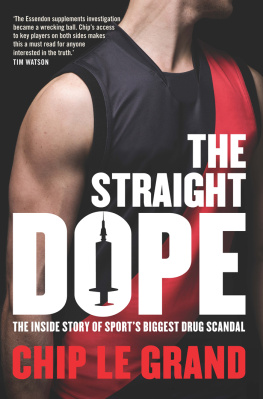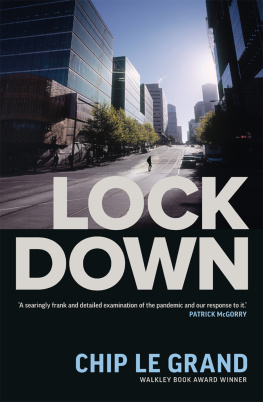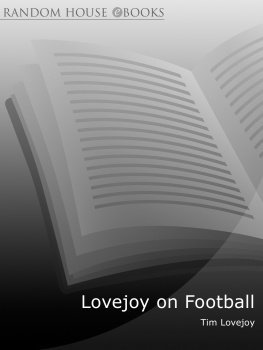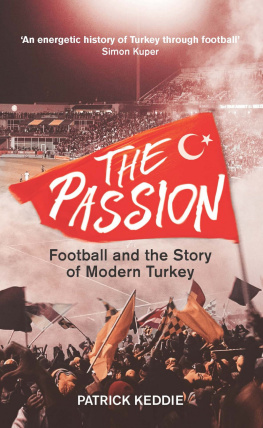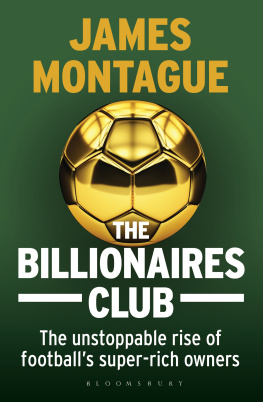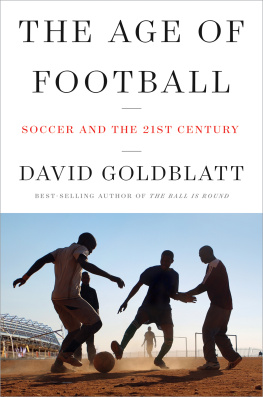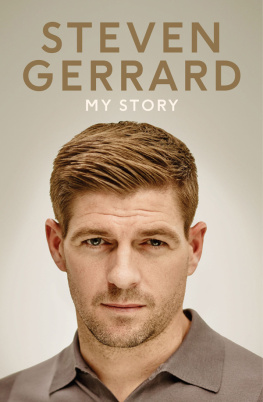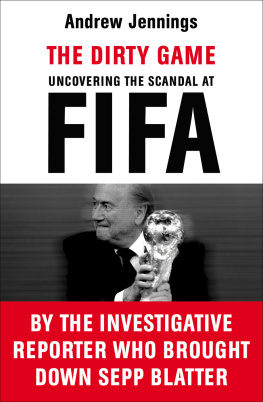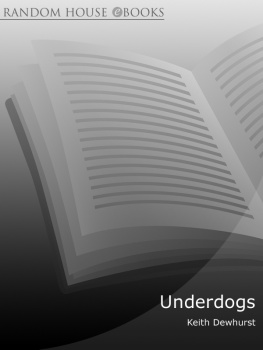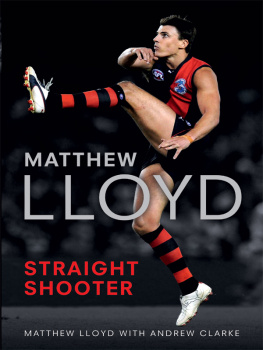MELBOURNE UNIVERSITY PRESS
An imprint of Melbourne University Publishing Limited
1115 Argyle Place South, Carlton, Victoria 3053, Australia
mup-info@unimelb.edu.au
www.mup.com.au
First published 2015
Text Chip Le Grand, 2015
Design and typography Melbourne University Publishing Limited, 2015
This book is copyright. Apart from any use permitted under the Copyright Act 1968 and subsequent amendments, no part may be reproduced, stored in a retrieval system or transmitted by any means or process whatsoever without the prior written permission of the publishers.
Every attempt has been made to locate the copyright holders for material quoted in this book. Any person or organisation that may have been overlooked or misattributed may contact the publisher.
Text design and typesetting by Cannon Typesetting
Cover design by Philip Campbell Design
Printed in Australia by McPhersons Printing Group
National Library of Australia Cataloguing-in-Publication entry
Le Grand, Chip, author.
The straight dope/Chip Le Grand.
9780522868500 (paperback)
9780522868517 (ebook)
Includes index.
Australian Sports Anti-Doping Authority.
Essendon Football Club.
Doping in sportsAustralia.
Australian football playersDrug use.
362.29088796
CONTENTS
AUTHORS NOTE
T HE WORST THING you can do in sport is cheat. It is a lesson we learn from the time we are old enough to kick a ball, dive into a pool, answer a starters gun. Given the national obsession with sport, some might think it is the worst thing anyone can ever do in life. We reserve a particular loathing for sporting villains: Lance Armstrong and his boosted blood, Hansie Cronje and his bookmaker buddies, Maradona and his hand of God.
That said, there is cheating and cheating. Grabbing a handful of jumper when the umpire isnt looking, refusing to walk when youve feathered one through to the keeper, taking a dive in the penalty boxthese are lesser forms, tolerated if not entirely accepted. Doping and match fixingthese are the capital crimes, the sins against sport from which no coach or athlete recovers.
The great drugs scandal was pitched as a diabolical double. If you want to dope and cheat we will catch you, declared the Minister for Sport. If you want to fix a match we will catch you. In the end, it was about neither of these things but something else; a tale of power, betrayal and ineptitude unmatched in Australian sport.
This story has taken me inside the basement office where Essendon sports scientist Stephen Dank worked throughout the clubs ill-fated 2012 season, to the plush boardroom at AFL House, to the visitors rooms at Shark Park, to the aptly named bunker room within the Australian Sports Anti-Doping Authoritys (ASADA) Canberra headquarters and to Melbournes Peptide Alley, a cluster of South Yarra shops where you can buy youth, virility and a great tan for a few hundred dollars.
What I discovered over two years of exhaustive reporting, hundreds of hours conducting interviews and countless more in the company of lawyers, football figures and scoundrels, is no one has a mortgage on the answernot James Hird nor anyone at Essendon, not Andrew Demetriou nor anyone at the AFL, not the Australian Crime Commission, not ASADA. Not the colourful crew of Peptide Alley. Not Stephen Dank.
After more than twenty years writing about sport, crime and politics for The Australian newspaper, this was a career storyone with the lot. What happened at Essendon, what happened at Cronulla, did not start and finish with the prick of a syringe. Whether banned substances were taken by footballers at either club, the scandal that followed destroyed friendships, threatened reputations and careers and exposed the failings of government, anti-doping authorities and powerful sporting bodies.
In the final days of 2014, with ASADAs case against thirty-four current and former Essendon players lurching towards inevitable collapse, I was convinced that this epic mess required a complete, unvarnished telling. After so much misadventure and, at times, misinformation, a sharply divided public deserved to be given the straight dope.
The foundations of this book are sourced from the documented history of the anti-doping investigationtranscripts of interviews given by footballers and club officials to ASADA, transcripts of Federal Court and Supreme Court proceedings, lawyer letters, text messages and emails exchanged between protagonists, the summaries of ASADA investigators and the findings of an AFL tribunal. Essential context, texture and depth are provided by the recollections and reflections of those at the centre of this saga. Most were willing to be interviewed, some for the first time since the scandal broke. Others chose to remain off the record. A relative few refused to co-operate in any way.
The World Anti-Doping Agency (WADA) announced in May 2015 that it is appealing the findings of the AFL tribunal. For thirty-four footballers accused of taking a banned peptide, the scandal and uncertainty continues. The WADA appeal is a re-hearing of the case before the Court of Arbitration for Sport. The same evidence, subject to the same standard and onus of proof, will be presented to a new panel, with anti-doping authorities hoping for a different result. Whatever the finding is, it wont change what happened.
1
IS IT ESSENDON? SAY NO MORE
T HE GREATEST DRUGS SCANDAL in Australian sport breaks in the middle of dinner. It is James Hirds fortieth birthday and the Essendon coach is sitting down to celebrate with his wife and four children when the telephone rings. Tania Hird feels a flash of annoyance as her husband leaves the table to take the call. She soon realises this is no ordinary interruption. David Evans, president of the football club, is on the other end of the line.
Were in a lot of trouble, Evans tells his friend. The AFL believes that weve taken performance-enhancing drugs. Get over here straight away.
Throughout his 253 games for Essendon, James Hird always had time. In the maelstrom of an Australian Rules football match, his were the safe hands, the clear thoughts, the sure steps. Whether for Essendon or another AFL club, few footballers have played the game with such elegant purpose. Yet, as Hird fumbles for the car keys inside his Toorak house, he feels harried, flustered. The sun has just set on a warm, late summers day. A two-year ordeal that will plunge Essendon, the AFL and the Australian Sports Anti-Doping Authority (ASADA) into crisis, embarrass a federal government and expose the vanities of Melbournes ruling boys club is about to begin.
Evans home, a stately Victorian mansion in the neighbouring suburb of Hawthorn, is a short drive away through some of Melbournes most exclusive streets. For Hird, it is a well-travelled path. Even after the scandal has ravaged and torn their friendship, Evans will say he loves Hird like a brother. He was Hirds professional mentor when the pair worked together at stockbroking firm JB Were and, before that, an unabashed fan. Like all Bombers supporters, Evans lost count of the times Hird was the difference between leaving a football ground in victory chorus or hearing the other teams song rasp in his ears.
The Essendon Football Club, the first club to win a premiership in the Victorian Football League when it was formed before the turn of the previous century, is family to both men. Evans father Ron played for Essendon, served on its committee and chaired its board. The grandstand at Windy Hill, Essendons old training ground, is named after Allan T Hird, Hirds grandfather. When David Evans joined the Essendon board, it was with Hirds support. At the end of 2010, Evans first year as club president, he had convinced Hird to return as coach. Their wives were friends. Their children played together. Neither could imagine these bonds ever being severed.

